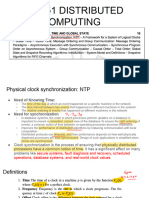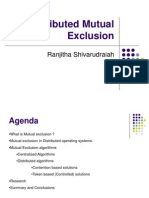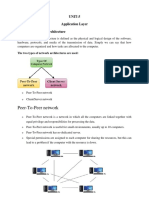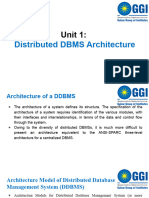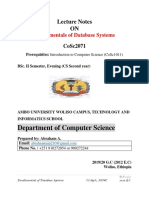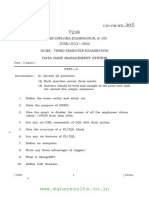100% found this document useful (1 vote)
587 views8 pagesAdv. OS Notes Module-04
The document discusses Database Operating Systems (DBOS), emphasizing their role in managing and optimizing database systems with a focus on scalability, security, and simplified development. It outlines key requirements for a DBOS, including efficient file and memory management, concurrency control, and fault tolerance. Additionally, it covers transaction process models, synchronization primitives, and concurrency control algorithms that ensure data consistency and integrity in multi-user environments.
Uploaded by
Minhaj ChoudhryCopyright
© © All Rights Reserved
We take content rights seriously. If you suspect this is your content, claim it here.
Available Formats
Download as PDF, TXT or read online on Scribd
100% found this document useful (1 vote)
587 views8 pagesAdv. OS Notes Module-04
The document discusses Database Operating Systems (DBOS), emphasizing their role in managing and optimizing database systems with a focus on scalability, security, and simplified development. It outlines key requirements for a DBOS, including efficient file and memory management, concurrency control, and fault tolerance. Additionally, it covers transaction process models, synchronization primitives, and concurrency control algorithms that ensure data consistency and integrity in multi-user environments.
Uploaded by
Minhaj ChoudhryCopyright
© © All Rights Reserved
We take content rights seriously. If you suspect this is your content, claim it here.
Available Formats
Download as PDF, TXT or read online on Scribd
/ 8




























